Get PeakVisor App
Sign In
Search by GPS coordinates
- Latitude
- ° ' ''
- Longitude
- ° ' ''
- Units of Length

Yes
Cancel
Share ×

Scan the QR code and open PeakVisor on your phone
❤ Wishlist ×
Choose
Delete
The Muskwa Ranges are part of the Far Northern Rockies, along with the Hart Ranges, in British Columbia, Canada. There are 291 named peaks in the range, the tallest and most prominent of which is Ulysses Mountain (3,024 m/9,921 ft). The two ultra-prominent peaks in the range are Ulysses Mountain with 2,285 m (7,497 ft) of prominence and Mount Sylvia with 1,553 m (5,095 ft) of prominence.
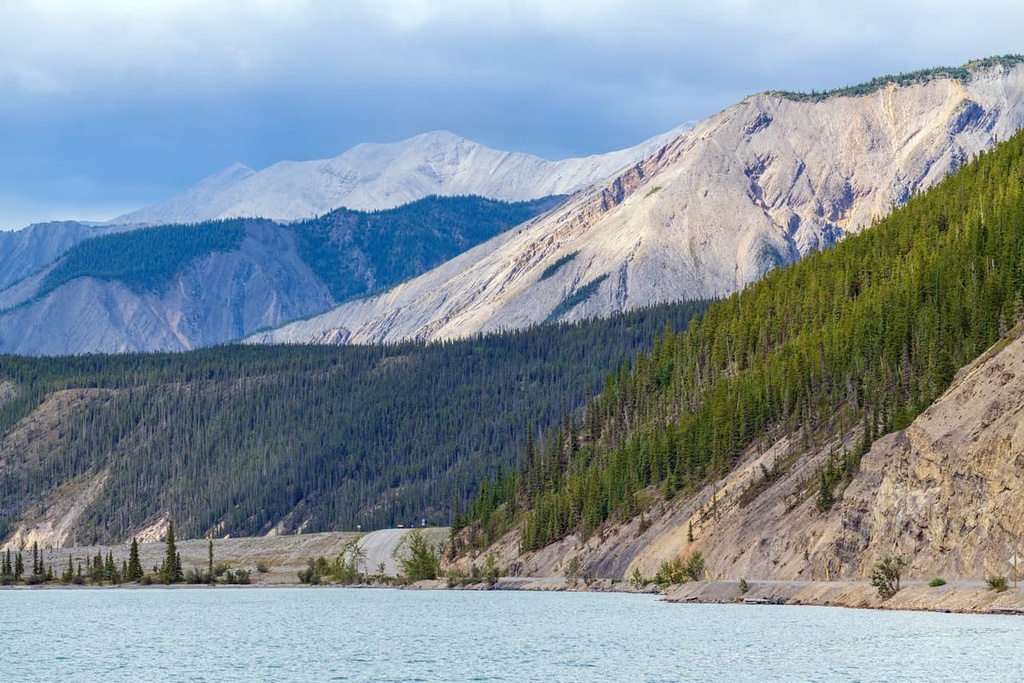
Located in northeastern British Columbia, Canada, the Muskwa ranges are the northernmost range of the Far Northern Rockies, which also include the Hart Ranges. The Far Northern Rockies are the northernmost part of the greater Rocky Mountains, which extend to the US state of New Mexico.
The peaks of the Muskwa Ranges run from the southeast to northwest along the Continental Divide. They are bordered by the Rocky Mountain Trench to the west and the foothills to the east.
The Muskwa Ranges contain many subranges, including the Allied Leaders Range, Akie Range, Battle of Britain Range, Deserters Range, Gataga Ranges, Italy Range, Rabbit Plateau, Sentinel Range, Stone Range, Terminal Range, Tochieka Range, Tower of London Range, and the Truncate Range.
The Liard River is the northern terminus of the Muskwa Ranges, with the Yukon Intermountain Ranges and the Mackenzie Mountains lying just beyond the edge of the ranges. The Peace Arm of Williston Lake is the dividing line between the Hart Ranges and the terrain to the south. The Muskwa Ranges are also bordered by Cassiar Mountains and the Omineca Mountains to the east.
Although the Muskwa Ranges are remote, there are many provincial parks and other protected areas found in the range that are worth visiting. The following are some of the parks and protected areas in the Muskwa Ranges that have hiking trails, unique natural features, beautiful lakes and rivers for paddling, and wildlife for viewing:
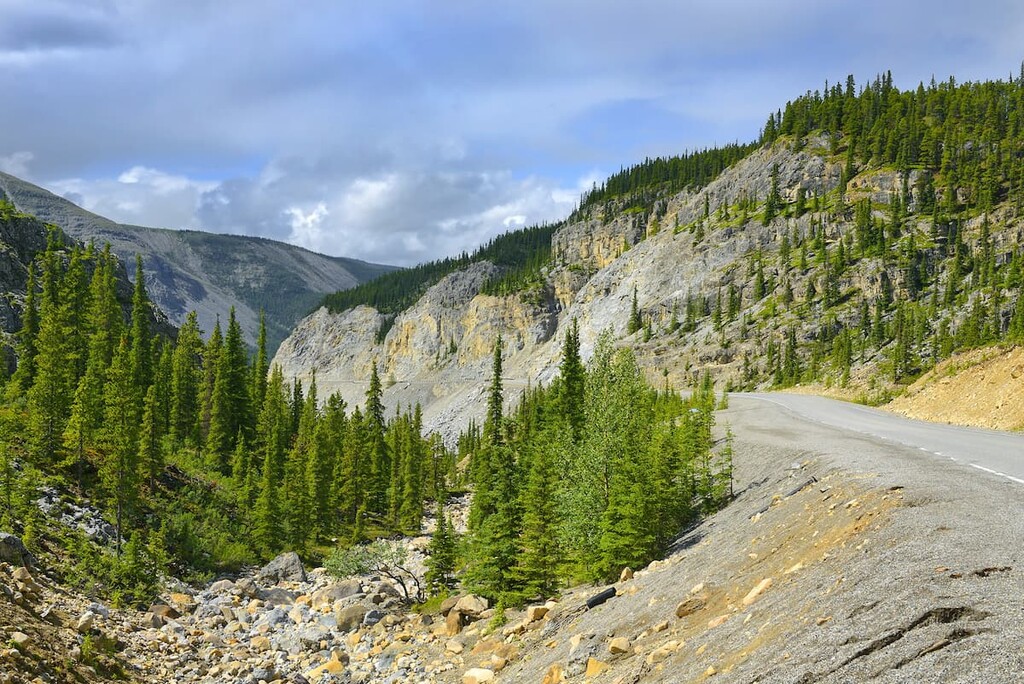
The main communities and cities near the Muskwa Ranges are Fort Nelson, Fort St. John, and Dawson Creek. Highway 97 is the only highway that accesses the Muskwa Ranges and is part of the Alaska Highway. Before its construction in the 1940s, the Far Northern Rockies were mainly accessible only by plane, boat, or by foot.
Most of the mountains in the Muskwa Ranges consist of layers of Paleozoic limestone stacked upon layers of Cretaceous-aged sandstone and shale. The summits are typically composed of the durable limestone, which holds the precipitous peaks that the Rockies are known for.
However, while the underlying geology of the Muskwa Ranges is mostly uniform, there are some unique areas that stand out from the rest of the range. Some of the geologically unique areas include the Misinchinka schists and the rock composition between Mount Churchill and Mount Lloyd George.
The Misinchinka schists are the primary type of rock in the Misinchinka Range, which is located to the south of the Muskwa Ranges, and is the main subdivision of the Hart Ranges. This band of schist continues north along the southwest edge of the Muskwa Ranges. The sandstone and mudstone that was typically eroded was metamorphosed to create the more durable schist that we see today.
Schist is more easily eroded than limestone, which makes schist-based mountains smaller than most of the other mountains in the Muskwa Ranges. For example, Deserters Peak is the tallest of the schist mountains and is only 2,265 m (7,430 ft). Schist is relatively soft and doesn’t hold the precipitous formations. Therefore, most of the schist mountains are rounded and the topography is subdued compared to the adjacent non-schist ranges.
Between Mount Churchill and Mount Lloyd George, the mountains are made of a mix of conglomerates, slates, quartzites, and limestone. They are among the tallest mountains in the range. The elevation of these mountains caused significant glaciers to form among their peaks, which created the valleys of the Gataga, Racing, Muskwa, and Kwadacha Rivers.
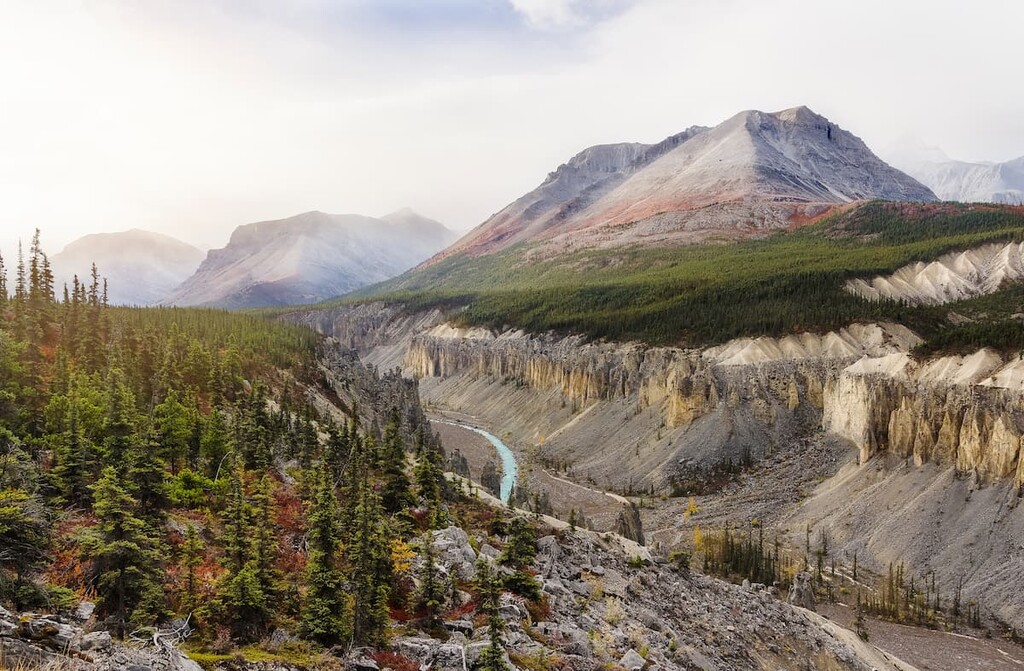
As part of the Rocky Mountains, the Muskwa Ranges started forming about 75 million years ago as oceanic tectonic plates collided with the west side of North America. As the oceanic plate subducted beneath the continent, it compressed the ancient coastal margin and lifted the Rockies in an event known as the Laramide orogeny.
The Canadian Rockies formed from the southwest towards the northeast, making it likely that the Muskwa Ranges were among the final ranges created during the Laramide orogeny. The mountains were formed during a process known as thrust faulting.
The faults are the cracks that formed through the layers of rock as the oceanic plates were pressing against the west coast. The faults typically reached through the upper layer of Cretaceous rock and down into the layers of Paleozoic rocks in the Rocky Mountains.
After the layers of rock cracked and the faults formed, the force of the tectonic collision squeezed the layers of rock such that they were thrust up and onto the surface. The layers were pushed from the southwest and stacked toward the northeast. The layers could be stacked horizontally like Castle Mountain in the Park Ranges, or they may have been pushed closer to vertical, such as what we see in the Front Ranges around Mount Yamnuska.
During the Pleistocene, ice sheets covered most of the Rockies, the western cordillera, and most of Canada. However, there are some areas in the Muskwa Ranges that show little or no evidence of the glacial erosion that is typical to the rest of the Rockies.
Neither the continental ice sheet, nor alpine or cirque glaciers, seemed to affect some areas of the Muskwa Range. While there is widespread evidence of glacial erosion across the Hart Ranges, the Muskwa Ranges show localized, rather than regional, topographical differences. However, the near universal veneer of drift across the ranges reveals that glaciers did cover the Muskwa Ranges at some point.
There are three distinct ecologies represented in the Muskwa Ranges that are defined according to their relative elevations. These ecologies are the Alpine Tundra Zone, the Spruce-Willow-Birch Zone, and the Engelmann Spruce – Subalpine Fir Zone.
While the alpine is all representative of the Boreal Altai Fescue Alpine, there is a difference between the subalpine in the north and south of the northern Rockies. The northern subalpine is representative of the Spruce-Willow-Birch Zone while the south is part of the Engelmann Spruce-Subalpine Fir Zone and the Sub-Boreal Spruce Zone.
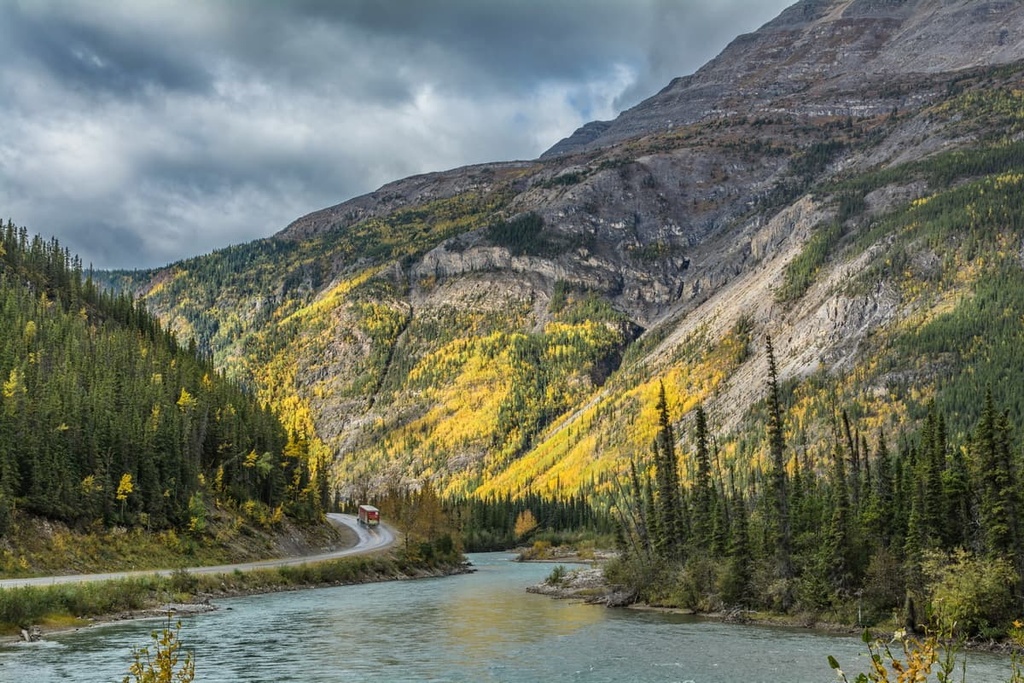
The peaks of the Muskwa Ranges are barren, rocky, and covered with glaciers or a seasonal snowpack. In sheltered areas and along seasonal seepage routes, grasses, sedges, and dwarf shrubs will grow. Closer to the tree line, alpine meadows grow, with stands of krummholz dominating in protected areas.
Mountain goats and Stone’s sheep are the only large animals that inhabit the northern alpine year-round. However, hoary marmots and Columbian ground squirrels burrow under the alpine rocks along the tree line and there are several birds that nest in the alpine, such as the white-tailed ptarmigan and the American pipit.
The subalpine of the north end of the Muskwa Ranges is part of the Spruce-Willow-Birch Zone, which is the harshest zone in the province with the coldest, longest winters and the shortest and coolest summers. The climate and terrain in this zone make it difficult for human habitation; however, the pristine wilderness and abundant wildlife in the region make it ideal for many recreational activities.
The mountains are steep and the subalpine is filled with forests of subalpine fir and spruce, with lodgepole pine growing at lower elevations. The warmer, southern slopes and valley bottoms may have stands of trembling aspen and scrub birch and willow also grow in protected stands.
Rocky Mountain elk and mule deer tend to inhabit the east side of the mountains in the foothills where the snowfall tends to be less frequent than the rest of the range. Moose and caribou are widespread in the range, too; however, even they may leave the region by mid-winter in search of better grazing.
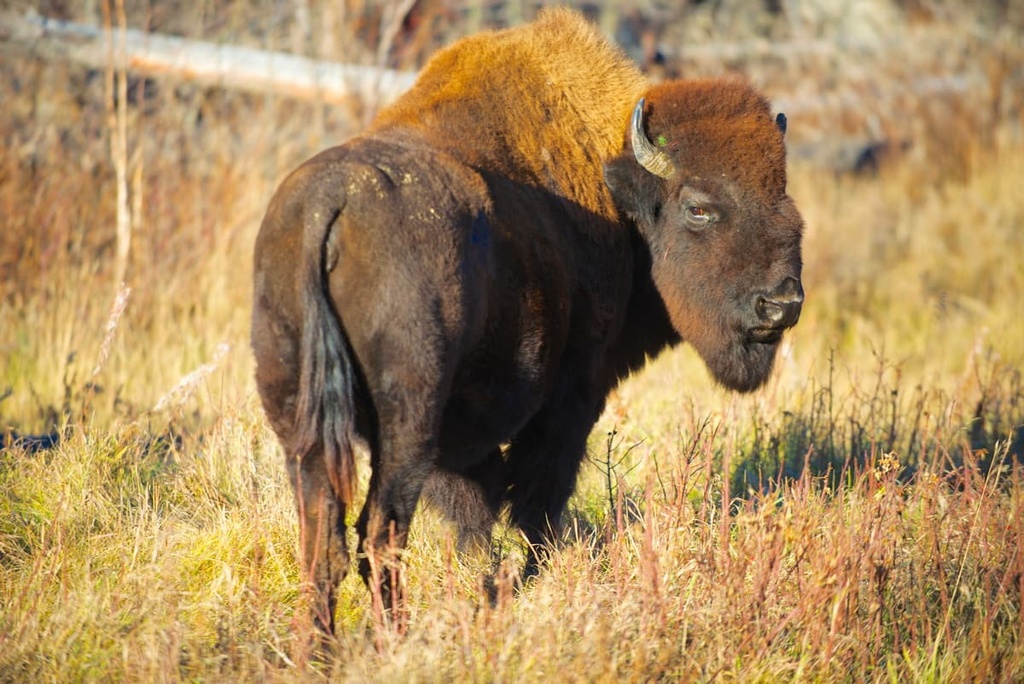
The southern third and the lower elevation Misinchinka schists along the west of the Muskwa Ranges are characteristic of the ecology of the Engelmann Spruce-Subalpine Fir Zone. The forests here are dominated by subalpine fir and Engelmann spruce and the significant annual snowfall feeds the creeks and rivers throughout the year.
Animals in the south end of the Muskwa Ranges are similar to those in the north. You may encounter grizzly bears, black bears, wolves, and cougars in this part of the range. The common raven, gray jay, and the boreal chickadee survive the harsh winters in the region by foraging for seeds or carrion. The birds that inhabit the region are robust and hardy so that they can survive the long and cold winters.
The eastern slopes of the Canadian Rockies were among the first areas in western Canada to be free of the ice sheets that covered the continent for thousands of years. The ice first started melting in the south of the Rockies and gradually the corridor along the eastern slopes opened again, with plants, animals, and humans migrating from the south to inhabit the new territory.
While the southern Canadian Rockies around Banff, and Kananaskis Country were first inhabited about 12,000 years ago, it wasn’t until about 8,000 years ago that people started to inhabit the Far Northern Rockies and the Muskwa Ranges.
The Muskwa Ranges are the traditional territory of people from the Dene First Nations and the Métis Nation British Columbia. In the late eighteenth century, Cree First Nations migrated west with the fur traders and took over inhabited territories. The conflict between the Cree and the Dene was settled during a ceremony along the Peace River, which separates the Muskwa from the Hart Ranges.
The decision was that the Peace River became the new territorial boundary, with the Dene in the north and the Cree to the south Before contact with Europeans, the Métis and First Nations thrived by hunting and gathering in the region.
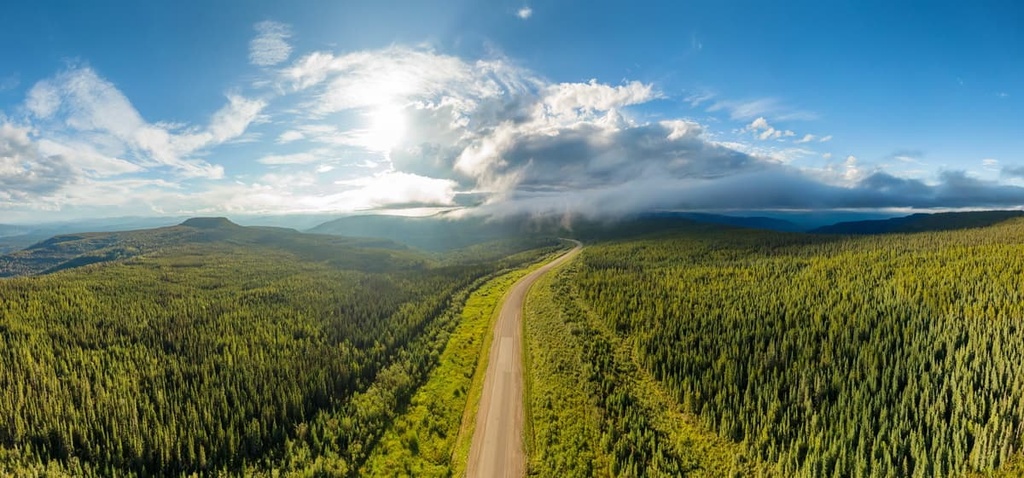
With the arrival of the fur trade, trapping became the main livelihood of the people in the north, a practice that continues in some capacity to this day. Fort Nelson was established in 1805 by the North West Company, marking the start of European influence in the region.
Significant survey expeditions of the northern Rockies began in 1893 when R.G. McConnell worked for the Geological Survey of Canada. McConnell was responsible for naming Mount Lloyd George after the British prime minister.
Prior to 1942 and the construction of the Alaska Highway, there were no significant roads into or through the northern Rockies. The rivers were part of the traditional transportation routes in the region, as was the Davie Trail, which traveled along the Rocky Mountain Trench.
Residents and visitors to the Muskwa Ranges needed to travel by foot, boat, or plane, prior to the Alaska Highway opening to the public in 1948. The construction of the Alaska Highway spurred the development of the region to its current level. Trapping provides the livelihood for many residents of the area, as does forestry and mining.
The Muskwa Ranges are filled with pristine wilderness areas, raging rivers, tremendous waterfalls, stunning alpine lakes, and many recreational opportunities for the hardy adventurer. The following are some of the incredible areas for backcountry adventures and hiking in the range:
Overlooking the Peace Reach of Lake Williston, at the south end of the Muskwa Ranges is Butler Ridge. The ridge is encompassed by Butler Ridge Provincial Park, and the highlight is the hiking trail that runs along the 15 km (9 mi) ridge. The park also offers boating, fishing, hiking, and wildlife viewing opportunities and boat access to British Columbia’s largest man-made lake, Lake Williston.
The trail up Butler Ridge is over 13 km (8 mi) long, and it offers amazing views of the Rocky Mountains, the Peace River, and Williston Lake. The trail climbs 753 m (2,470 ft); however, the views from the ridge are worth the effort of the steep hike.
Kwadacha Wilderness Provincial Park is a wilderness park on the west side of the Muskwa Ranges. It borders Northern Rocky Mountains Provincial Park. The park is only accessible via two hiking trails or by plane.
The primary trail is a 150 km (90 mi) trek from the Alaska Highway that follows the Prophet River into the Muskwa Valley and finally the Muskwa River to Fern Lake.
The trail into the park is believed to be one of the migration routes of the first peoples who inhabited the Muskwa Ranges and Rocky Mountain Trench after the last glacial maximum. The hike into and the hikes through Kwadacha Wilderness Provincial Park are difficult and should only be done by hikers with sufficient experience and fitness.
The park is open to hikers and horses with most people enjoying the area through photography, climbing and scrambling, fishing, and wildlife viewing. The park is home to over 70 distinct bird species, including eagles, warblers, Lapland Longspurs, grebes, teals, hawks, falcons, and kestrels.
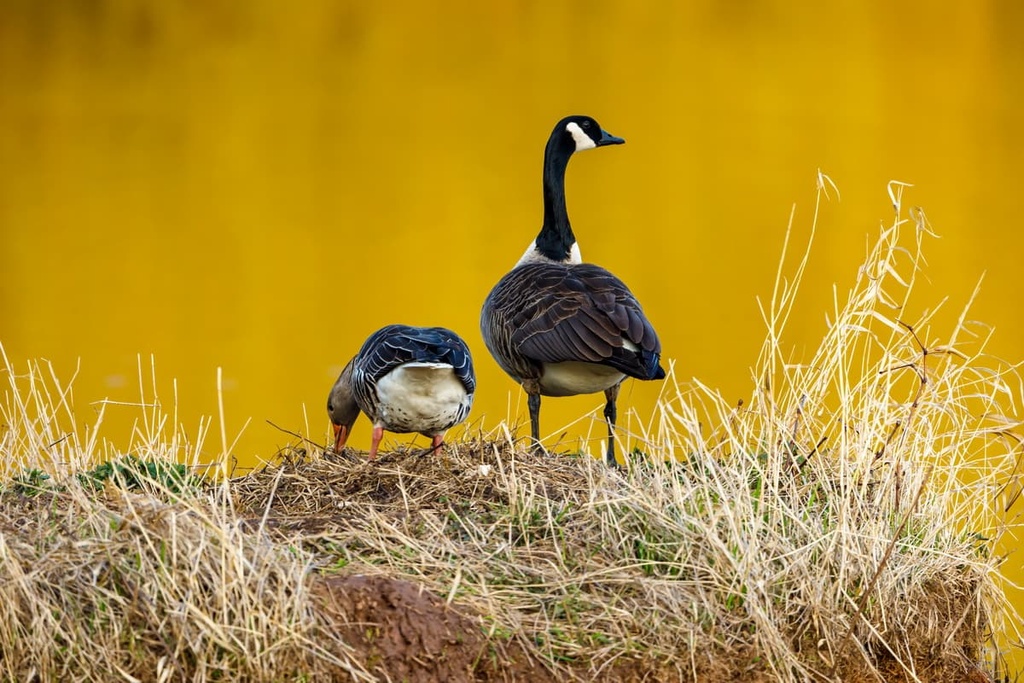
The remote wilderness of Graham-Laurier Provincial Park is located to the west of the Continental Divide. It is home to abundant wildlife populations. Hiking is the main activity in the park, and visitors may also go horseback riding, fishing, and wildlife viewing. Backcountry camping is permitted across the park; however, there are no facilities and the subalpine ecosystem is fragile, so take care when traveling in the region.
Christina Falls is one of the main attractions in the region. It is accessible by a 22 km (13.7 mi) trail that is open to OHV and non-motorized users. There are also trails for non-motorized users along Emmerslund Creek, Needham Creek, Horn Creek, and the Graham River that lead to alpine meadows and other viewpoints.
Northern Rockies Provincial Park is the largest of the parks in the region, encompassing 6,657 square kilometers (2,570 square miles) of mountainous terrain. The park borders Stone Mountain Provincial Park and Kwadacha Wilderness Provincial Park.
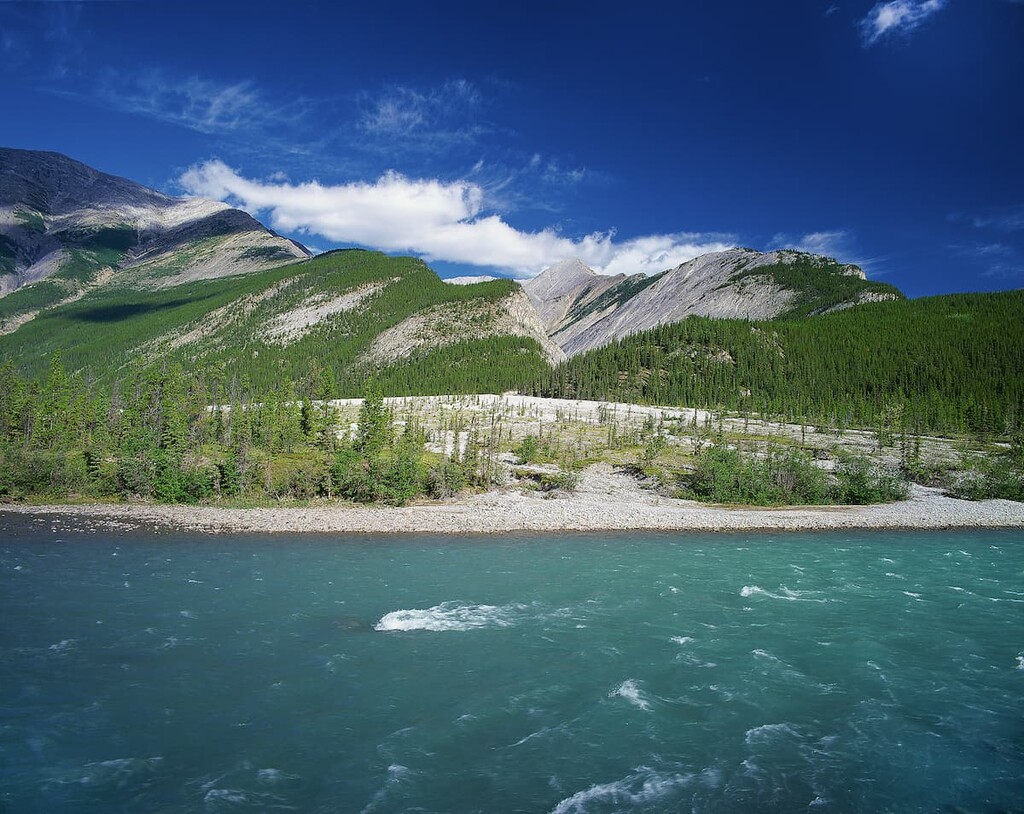
Some of the main activities of the park are hiking, backpacking, trail riding, mountaineering, and canoeing. Some of the popular canoe trips in the park follow the Tuchodi River and the Muskwa River.
There are many primitive campsites along the region’s major rivers as well as many trails along the creeks and rivers that were created by local outfitting companies. However, none of the campsites or trails are well maintained and access to the park is by hiking, horse, plane, or boat.
Located toward the north end of the Muskwa Ranges, Stone Mountain Provincial Park is part of a contiguous protected area that also includes Kwadacha Wilderness Provincial Park and Northern Rocky Mountains Provincial Park. Stone Mountain Provincial Park offers opportunities for canoeing, hiking, angling, horseback riding, and camping.
Recommended day hikes in the park include Summit Peak Trail, Erosion Pillars Trail, and Flower Springs Trail. Popular backpacking trails include MacDonald Creek Valley Trail and the Wokkpash Valley-MacDonald Creek Loop Trail. Along your trail you may discover some of the beautiful natural features in the park, such as the beautiful alpine meadows, waterfalls, alpine lakes, and hoodoos.
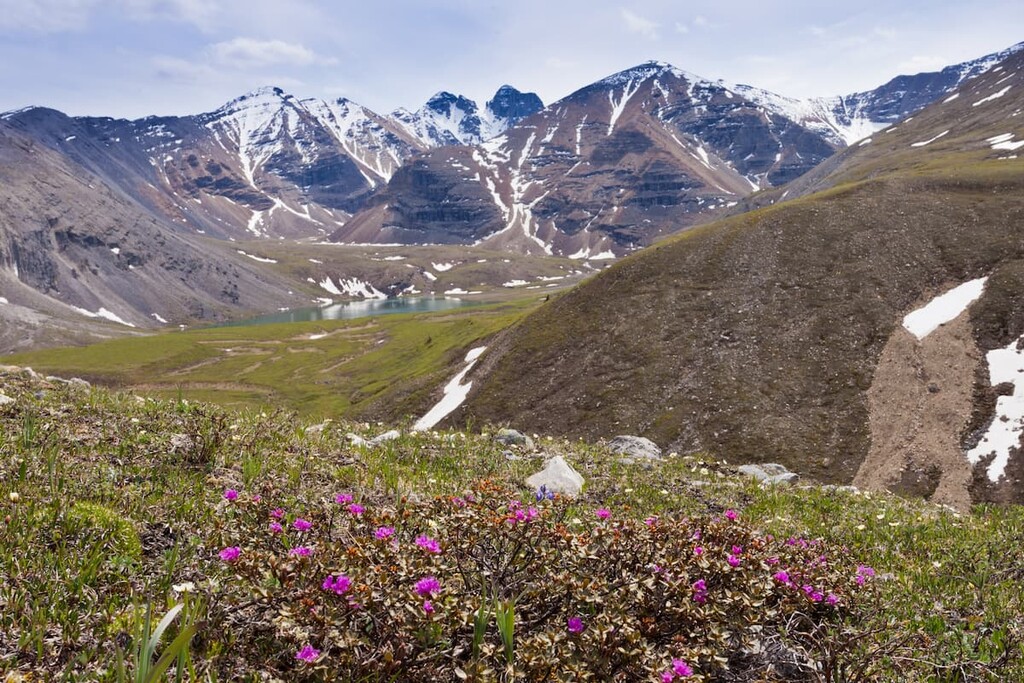
The mountainous regions of the northern Rockies are relatively sparsely populated except by small municipalities that were typically built around the forestry or mining industries. The following are some major towns and cities in the region, many of which are located around the edges of the northern Rockies.
Located at the junction of Highways 16 and 97 to the southwest of the northern Rockies, Prince George is considered the capital of northern British Columbia. It was originally founded as Fort George, a North West Company trading post established by Simon Fraser in 1807.
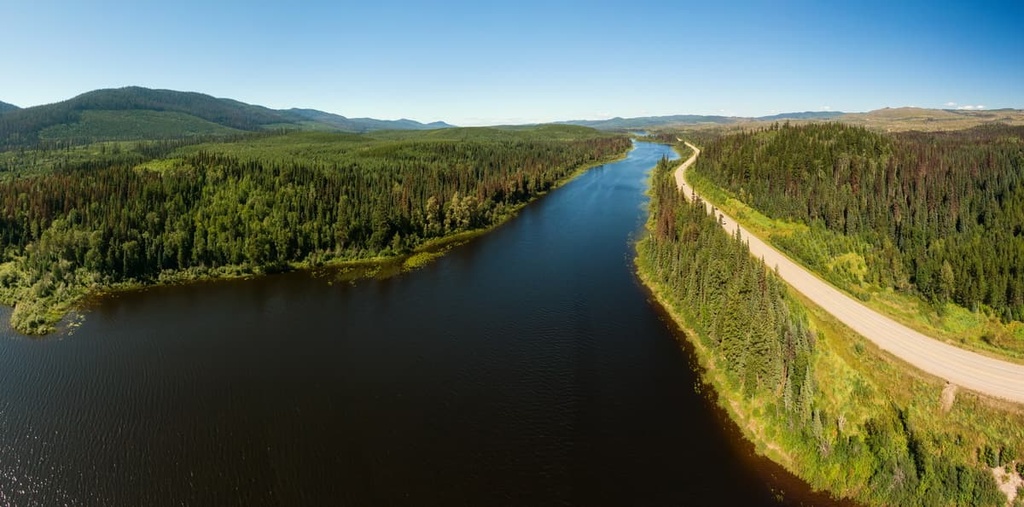
Prince George has grown into an important transportation and service hub for the north of British Columbia with all the amenities of a modern city. It features fine dining restaurants, cinemas, museums, a range of accommodations and an international airport.
Off-roading is a popular pastime of locals in the region and there are well established clubs and areas to practice motocross and drive OHVs. The area also has vast wilderness areas that local hiking groups flock to as well as opportunities for fishing and other outdoor recreation activities.
Some of the most popular hikes around the city include the Cottonwoods Island Loop, the Greenway Trail to Shane Lake Loop, McMillan Creek Loop, Troll Lake, Kakwa Lake Trail, and Forests for the World Lookout.
Located to the east of the northern Rockies, Dawson Creek saw its most significant population growth when it became Mile 0 for the Alaska Highway in 1942.
Dawson Creek is considered to be a gateway city to Alaska and the northwest of Canada. The area surrounding Dawson Creek has beautiful wilderness areas that are great for hiking, skiing, and OHV use. In addition to wilderness access, the city has an art gallery, a historical village, a museum, as well as annual fall fairs and a rodeo.
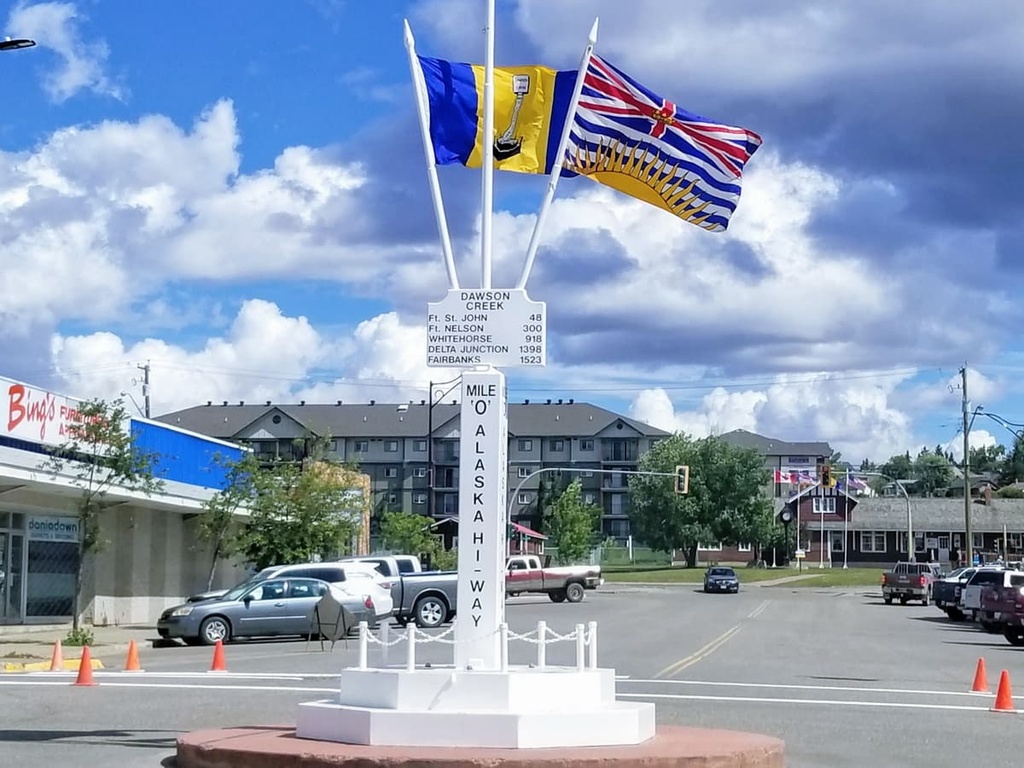
Fort Nelson was established as a trading post for the North West Company in the early nineteenth century. The community is surrounded by dense boreal forests, and it is located near several world-renowned attractions in the northeastern part of the Rockies.
Some of the attractions near Fort Nelson are found in the Liard River Hot Springs Provincial Park and Muncho Lake Provincial Park. Popular activities include hunting, fishing, snowmobiling, dog sledding, bird watching, and hiking.
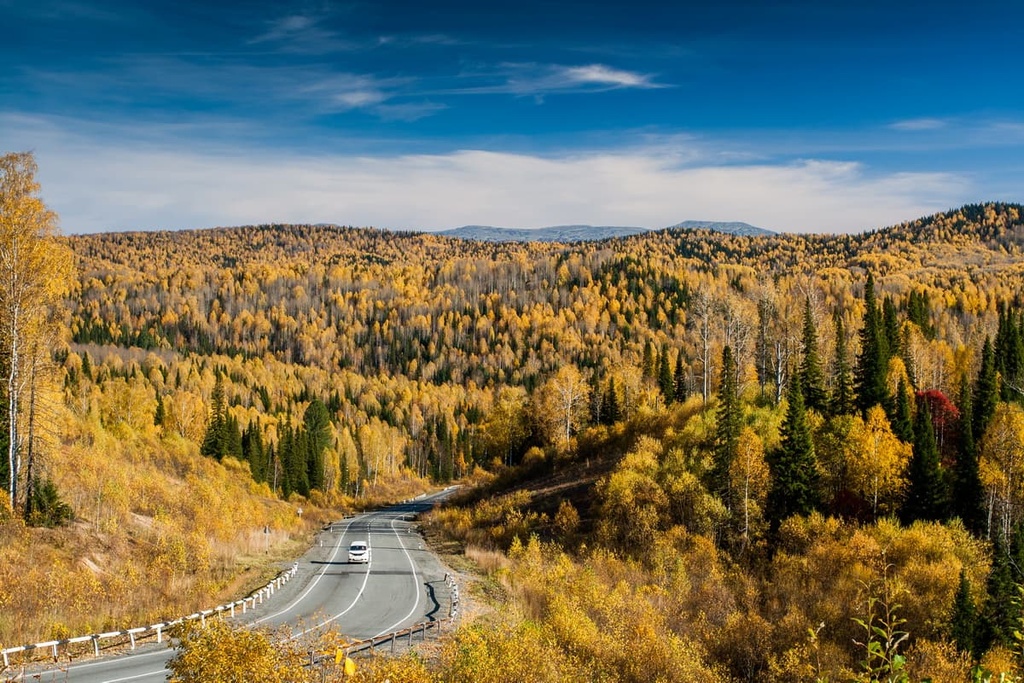
Explore Muskwa Ranges with the PeakVisor 3D Map and identify its summits.





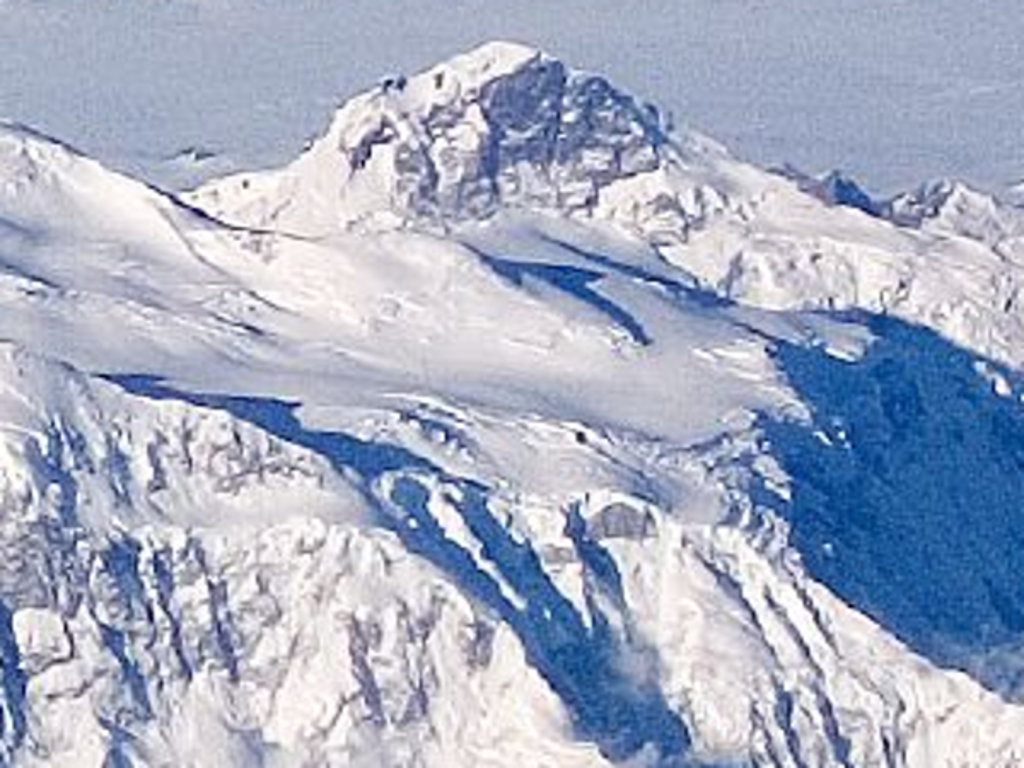
-R4.jpg)
